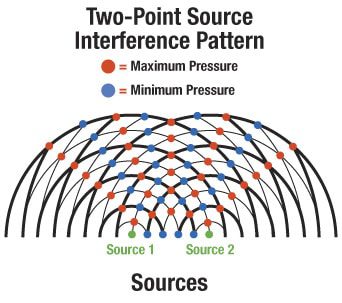General Introduction to Phased Array Testing
Many people are familiar with the medical applications of ultrasonic imaging, in which high-frequency sound waves are used to create highly detailed cross-sectional pictures of internal organs. Medical sonograms are commonly made with specialized multielement probes 1 known as phased arrays and their accompanying hardware and software. But the applications of ultrasonic phased array technology are not limited to medical diagnosis. In recent years, phased array systems have been increasing in use in industrial settings to provide new levels of information and visualization in common ultrasonic tests that include weld inspection, bond testing, thickness profiling, and in-service crack detection.
During their first couple of decades, commercial ultrasonic instruments relied entirely on single element transducers that used one piezoelectric crystal to generate and receive sound waves, dual element transducers that had separate transmitting and receiving crystals, and pitch-and-catch or through-transmission systems that used a pair of single element transducers in tandem. These approaches are still used by the majority of current commercial ultrasonic instruments designed for industrial flaw detection and thickness gaging; however, instruments using phased arrays are steadily becoming more important in the ultrasonic nondestructive testing (NDT) field. The principle of constructive and destructive interaction of waves was demonstrated by English scientist Thomas Young in 1801 in a notable experiment that utilized two point sources of light to create interference patterns. Waves that combine in phase reinforce each other, while waves that combine out-of-phase cancel each other (see Figure 1-1).
Q=Maximumpressure Q=Minimumpressure

Figure 1-1
Figure 1-1 Two-point source interference pattern Phase shifting, or phasing, is in turn a way of controlling these interactions by time-shifting wavefronts hat originate from two or more sources. It can be used to bend, steer, or focus the energy of a wavefront. In the 1960s, researchers began developing ultrasonic phased array systems that utilized multiple point-source transducers that were pulsed so as to direct sound beams by means of these controlled interference patterns. In the early 1970s, commercial phased array systems for medical diagnostic use, first appeared using steered beams to create cross-sectional images of the human body (see Figure 1-2).

Figure 1-2
Figure 1-2 Phased arrays used for medical diagnoses Initially, the use of ultrasonic phased array systems was largely confined to the medical field, aided by the fact that the predictable composition and structure of the human body make instrument design and image interpretation relatively straightforward. Industrial applications, on the other hand, represent a much greater challenge because of the widely varying acoustic properties of metals, composites, ceramics, plastics, and fiberglass, as well as the enormous variety of thicknesses and geometries encountered across the scope of industrial testing. The first industrial phased array systems, introduced in the 1980s, were extremely large, and required data transfer to a computer in order to do the processing and image presentation. These systems were most typically used for in-service power generation inspections. In large part, this technology was pushed heavily in the nuclear market, where critical assessment greatly allows the use of cutting edge technology for improving probability of detection. Other
early applications involved large forged shafts and low-pressure turbine components. Portable, battery-powered phased array instruments for industrial use appeared in the early 2000s. Analog designs had required power and space to create the multichannel configurations necessary for beam steering. However, the transition into the digital world and the rapid development of inexpensive embedded microprocessors enabled more rapid development of the next generation phased array equipment. In addition, the availability of low-power electronic components, better power-saving architectures, and industry-wide use of surface-mount board designs led to miniaturization of this advanced technology. This resulted in phased array tools, which allowed electronic setup, data processing, display, and analysis all within a portable device, and so the doors were opened to more widespread use across the industrial sector. This in turn gave the ability to specify standard phased array probes for common applications.



